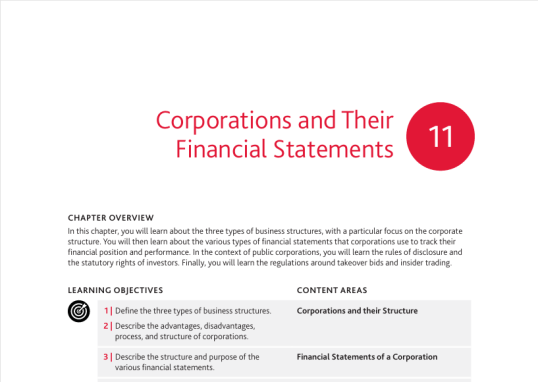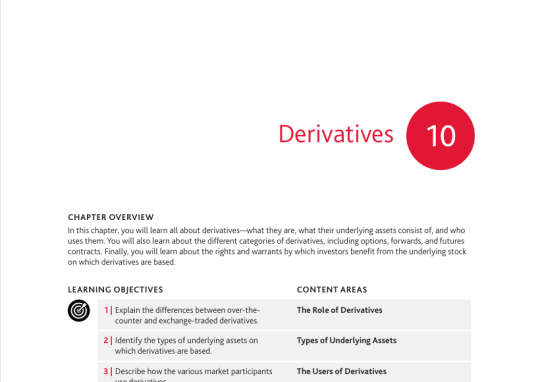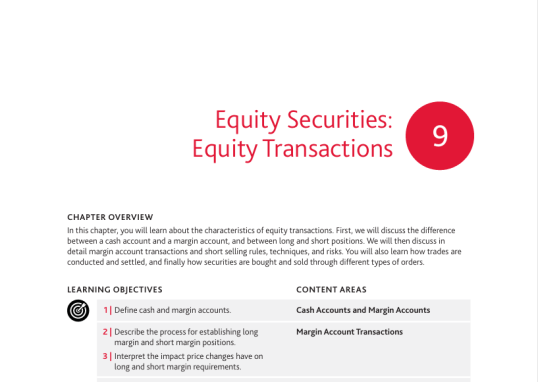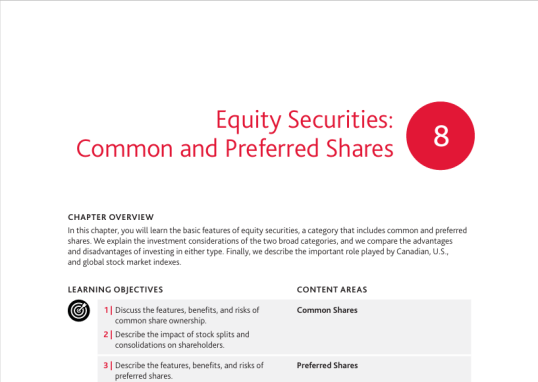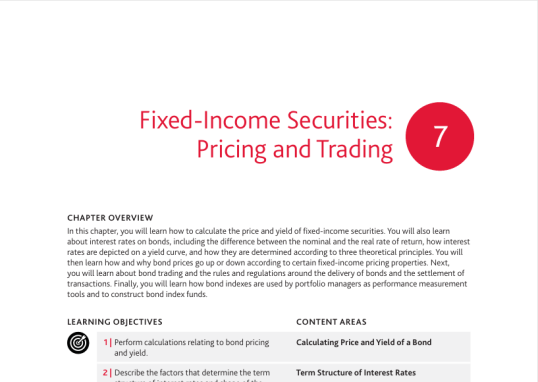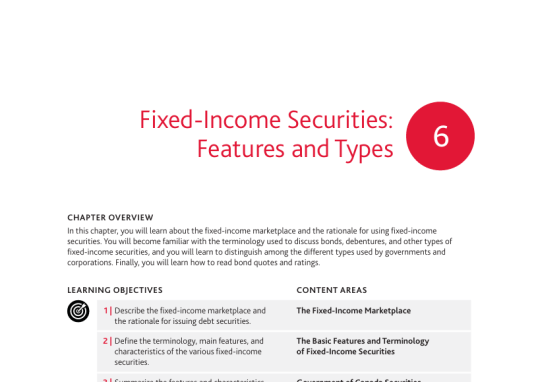CSC V.1 Chapter12 notes
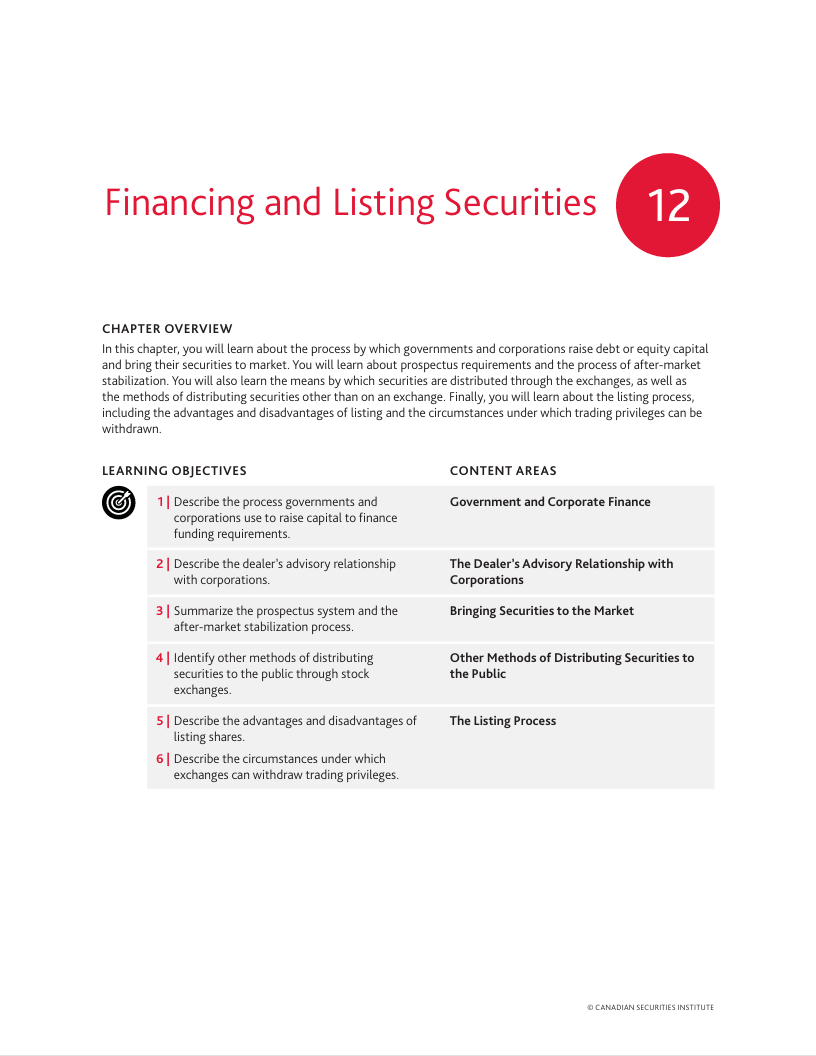
In
FINANCING AND LISTING SECURITIES
GOVERNMENT AND CORPORATE FINANCE
- Financing or underwriting is the process by which an issuer (governments or corporations) raise debt and/or equity. For governments this financing is often accomplished through an auction process and occasionally through a fiscal agency
- The Canadian Government uses the competitive tender system for most products. Government securities distributors submit bids, and highest price (lowest yield) wins. These bidders are Schedule I and Schedule II Banks, investment dealers and foreign dealers. The most important dealers are known as primary dealers
- The non-competitive tender system involves carving out a portion of the issue and allocating to smaller distributors at the average price for the winning, competitive bids
- New issues of provincial direct and guaranteed bonds are usually sold at a negotiated price through a fiscal agent. Direct bonds are issued in the government’s name. Guaranteed bonds are issued in the name of a crown corporation but are guaranteed by the provincial government as to payment
CORPORATE FINANCING
- Canadian corporate financing occurs through a negotiated offering. Corporations raise capital by selling shares (equity financing) or by issuing fixed-income securities (debt financing)
- Authorized shares are the maximum number of shares (either common or preferred) that a corporation may issue under the terms of its charter
- Issued shares consist of the portfolio of authorized shares that the corporation has issued, either to the investing public, company insiders, or large institutional investors. Collectively, these are the outstanding shares
- Outstanding shares times current market price determines a company’s market capitalization
THE CORPORATE FINANCING PROCESS
- When negotiations begin between a dealer and corporate issuer for a new issue of securities, a due diligence report is prepared by the dealer
- An important decision is what kind of security should be issued: Bonds, debentures, preferred shares or common shares
- Primary advantages for bonds – lower interest rates than debentures, more marketable. Primary disadvantages – less flexibility because of pledge of assets, makes mergers and acquisitions (and being acquired) more difficult
- Primary advantages for debentures – flexible, no specific pledges or liens and reduction in cost at issue. Primary disadvantages – higher interest rates required than bonds
- Primary advantages for preferred shares – dividend payments are not mandatory, greater flexibility in financing, limited lifespan through redemption of shares. Primary disadvantages – expensive because dividends are paid with after-tax income, non-payment of dividends can trigger penalties
- Primary advantages for common shares – no obligation to pay dividends, no repayment of capital, larger equity base can support more debt, market value of company easily established. Primary disadvantages – dilution for existing shareholders, dividends (if paid) more expensive, underwriting fees greater than if debt were issued
THE METHODS OF OFFERING
- In a private placement, one or a few large institutional investors are solicited to buy the entire issue. This method is cheaper and faster for the issuing company – no formal prospectus must be prepared
- In a public offering, there must be a prospectus prepared. A primary offering refers to the first time that a class of particular shares is available for sale to the public and generally takes place in the IPO market. A secondary offering refers to the second (or third or fourth) time that the class of shares is available to the public
- In a best efforts underwriting agreement, the dealer acts as agent and make its best efforts to sell the securities. The issuer faces the risk of not raising the capital
- In a firm commitment underwriting arrangement (also known as a bought deal), the underwriter acts as principal, buying a specified number of shares and assuming the risk of selling them
STEPS IN THE UNDERWRITING PROCESS
- Most provinces require that issuers file both a preliminary prospectus and final prospectus. The preliminary prospectus is designed to qualify interest in the issue. After the preliminary prospectus is filed with the applicable securities commissions, the dealer has 90 days to prepare, submit and receive approval for the final prospectus. This period of time is known as the waiting period. During this period of time, only limited communication with investors is permitted
- The preliminary prospectus serves two key purposes: It is a key disclosure document required under the law and helps qualify interest in the issue. It does not include information about price and the size of an issue. The preliminary prospectus is also known as the red herring prospectus
- In addition to the preliminary prospectus, many investment dealers prepare a greensheet – a summary fact statement for sales people, highlighting the salient features of the issue
- The final prospectus must provide “full, true and plain disclosure of all material facts” about the securities to be distributed. Once the final prospectus is approved by the regulators or blue skyed, then it can distributed to the public
- A market out clause permits the underwriter to cancel an offering without penalty under certain conditions, such as changes in market conditions
SHORT FORM PROSPECTUS SYSTEM
- The short form prospectus is a streamlined method of accessing funds through the public markets, available to senior reporting issuers who are already subject to continuous disclosure requirements
- The logic behind the short form prospectus system is that much of the information revealed through the preliminary and final prospectus has been in the public domain for an extended period of time, given that these are senior reporting issuers
AFTER MARKET STABILIZATION
- One of the duties of a lead dealer in an underwriting issue may be to provide after-market stabilization of that security’s offering. This involves supporting its price in the first days of trading
- There are three primary methods of after-market stabilization
- The lead dealer may have an greenshoe option or over-allotment option. This allows it to purchase additional shares in the future at a locked-in price, taking a short position at the IPO date. If the share price falls, it can buy shares and support the price. If the share price rises, it can buy in at the locked-in price. Either way, this tends to stabilize the price
- The “penalty bid” means the lead underwriter will penalize members of the selling group if their customers sell (or “flip”) shares in the after-market after the deal closes
- The dealer may post a stabilizing bid to purchase shares
OTHER DISTRIBUTION METHODS
- Junior company distributions – this is known as risk capital because these companies usually have no record of earnings and few assets
- Options of treasury shares and escrowed shares – these shares cannot be sold or transferred, unless special approval is given
- Capital Pool Company (CPC) Program – this describes a newly created company with no assets other than cash and with no established business or operations. It can buy an existing business or assets, called significant assets, through a qualifying transaction
- NEX Board – separate board of the TSX Venture Exchange that provides a trading forum for companies that have fallen below the TSX Venture Exchange’s listing standards
- Crowdfunding – process of raising start-up capital by soliciting contributions from the public at large
THE LISTING PROCESS
- When the listing application is completed, the company signs a formal Listing Agreement. This is the contract that details the specific regulations and reporting requirements that the company must meet
- By signing a Listing Agreement, a company agrees to:
Submit annual and interim financial reports; promptly notify the exchange about dividends or other distributions; and notify the exchange of other proposed material changes in the business or affairs of the company - There are advantages associated with listing on a major exchange: Prestige and goodwill, established and visible market value, excellent market visibility, more information available, and simplified valuation for tax purposes. Disadvantages: additional controls on management, need to keep market participants informed, market indifference, additional disclosure, and additional costs to the company
WITHDRAWING TRADING PRIVILEGES
There are three temporary withdrawals of trading privileges that the exchanges can invoke:
- Delayed opening – occurs if before the market opens, there is a heavy influx of buy and/or sell orders for one particular security. It does not affect the general opening of the market
- Halt in trading – occurs in the middle of the trading day to allow significant news to be widely disseminated. A halt would occur if there were news of a pending merger or a major contract had been lost
- Suspension of trading – imposed if the company’s financial condition does not meet the exchange’s requirements or the company fails to comply with its commitment – for example, being late with financial statements
- Cancelling a listing/de-listing – this is a permanent cancellation of listing privileges. Reasons:
- Delisted security no longer exists because it was called for redemption or substituted for another security as a result of a merger
- The company is without assets or has gone bankrupt
- Public distribution of the security has dwindled to an unacceptably low level
- The company has failed to comply with the terms of its listing agreement
Author
shanghaizhangyijie@gmail.com
